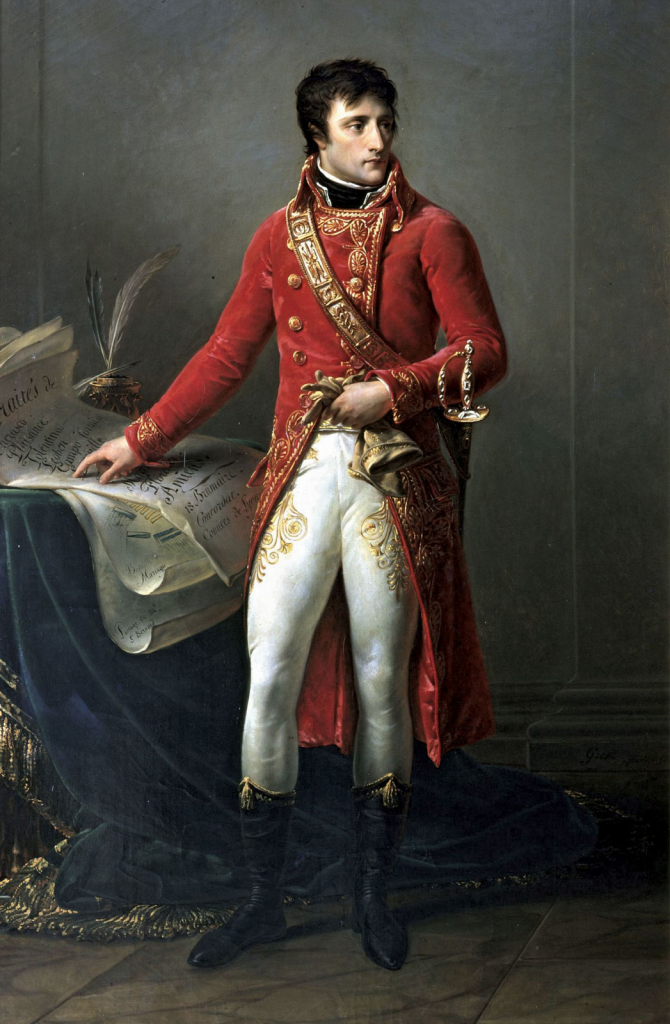In most wargames, you can’t manage the combat result. After you move and commit to an attack, your decisions are over. There is nothing left to do but roll the dice and pray for a good result. In Pub Battles, you can actually manage the fight, blow by blow as it unfolds. There are many decisions left to make. How exactly do you want to fight this engagement?
Often new players to Pub Battles will just stay every round of combat until contact is broken. Playing this way leaves everything up to fate. By carefully managing your combats, you can shift the strategic edge in your favor to win! Let’s look as some examples:

This is the opening of Gettysburg. (just making this up, not the actual OB) It is early in the day. We are defending McPherson’s Ridge.

The Confederates have advanced to attack Robinson’s Division. All movement is finished and we are resolving combat at the end of the turn.
If you’re not familiar with Pub Battles, dice normally score hits on 4-6. (only 5-6 if the defender is under cover) On the first hit, your unit flips to its Spent side: label up. The second hit will force your unit to retreat. A third hit will destroy it.

Round 1: The Confederates score 1 hit flipping Robinson. Heth’s lead wing takes 2 hits. He flips and retreats but his supporting wing advances to press the attack.

Now it’s decision time. At the end of the round, we have the option to voluntarily retreat and break off this engagement. Do you retreat and fall back, or stand and fight another round?
We have the advantage of the Hill. That gives Robinson cover. The Confederates only hit us on 5 or 6. We hit them on 4-6. Both sides roll 3 dice. On average they will cause 2/3 of a hit. We will cause 1 1/2 hits to them. We should stay right?
Well, even though the odds are in our favor, with a little luck the Confederates could still easily score 2 hits on us. Two more hits would destroy Robinson. Is that a big deal? It’s just 1 block.
Not normally but consider the strategic situation here. This is the opening of Gettysburg. There are very few units on the board, especially Federal ones. Every single piece has an exaggerated importance now. If we lose Robinson on the opening attack, first thing in the morning, we’ll be critically short that block for the rest of the day. The impact of losing him is magnified.
If Robinson get’s destroyed defending Cemetery Hill on Day 2, no big deal. Most of the Army of the Potomac will be here tomorrow. We’ll have plenty of blocks to spare then. Right now we only have a few blocks to delay and contain the waves of rebels pouring onto the field.
Given this, I’m feeling more cautious. I’d rather not risk it. We have ground and time to give up. We don’t have many men to lose right now. We can play cautious. We decide to voluntarily retreat:

Heth takes McPherson’s Ridge. Fine. Next turn we can Rally Robinson back to upright Fresh status, fall back, reform our lines and continue the good fight.
What could have happened if we stayed? Heth most certainly would have stayed and pressed the attack. There is no good reason for him to back down here. There are many possible outcomes. Here are a few likely ones:

1 -We score 2 hits, Confederates score none. We hold the ridge and successfully delay the Rebs for a couple of turns while they Rally and prepare to attack again.

2 -We score 1 hit, Confederates score 1 hit. We are shoved back anyways but we flipped another Reb unit costing them more time.

3 –We score 1 hit, Confederates score 2 hits. Robinson is destroyed! The ridge is lost and we are going to be hard pressed to slow the Confederate advance on Cemetery Hill. Looks ugly doesn’t it?
Three easily possible outcomes. Notice that WE have the power to take the 3rd, worst option completely off the table. We just need to exercise a little discretion and voluntarily retreat.
Let’s turn the table around and look at this from the Confederate perspective. Let’s say the Feds recklessly decided to stand with Robinson and they got lucky. He survived, held the Ridge and scored 2 hits on Heth, forcing him back:

We move on to the next turn now. We are the Confederate player. Federals have already moved and are incapable of bringing up any support for Robinson. Robinson did Rally, but our artillery bombardment flipped him back to Spent status:

We have no other Fresh units in position to attack this turn. We have 2 basic choices:
- Delay our advance this turn and Rally Heth to Fresh so that we can attack next turn at full strength:

- Strike now! Advance to attack Robinson again while Spent:

Option 2 is risky. Is it worth the risk?
Odds are very good that we would see a unit destroyed. Odds are also very good that we would take the Ridge and destroy Robinson as well!

As the Confederates, we do have units to lose now. Time is much more important. This is a close call. I could argue either way on this. Personally, I’d go for the risky option 2: Attack now while Spent.
Notice all the decisions here. Many things in our control. Many ways to fight this out.































